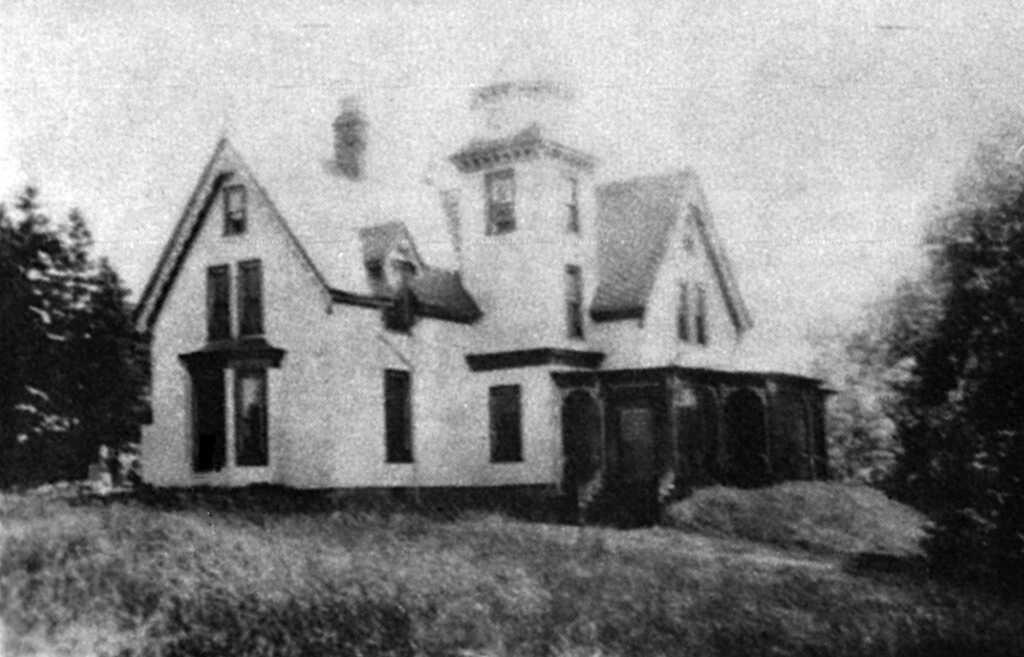The decade of the 1870s commenced with a boom in real estate which petered out after a few years of prosperity. One project attempted was the subdividing of about 100 acres of the virgin land of Mount Amelia where streets were laid out, and building lots surveyed. The promoters were Hon. James W. Johnston, Dr. Parker, John Esdaile, B. H. Hornsby, and others who became a corporate body in 1870 known as the proprietors of Prince Arthur Park. In that year, Mr. Esdaile built the first house. Except for the Harvey house at “Locust Knoll” and the France house at “Mapledene” (“Fairmont”), there was little or no development there for the next thirty years.
As the 50-year charter of the Steam Boat Company had expired in 1867, there was no longer any legal obstacle in the way of a competitive ferry. A new Company with a capital of $200,000 was incorporated in 1870 by George W. Corbett, a Dartmouth druggist, and others. Nothing seems to have come out of this project.
One gathers from fragmentary sources that there were the usual outdoor activities that winter. A Halifax newspaper of January 22nd reported 12 inches of ice in Maynard’s Lake at Dartmouth, and “hundreds went over from Halifax on Saturday afternoon to enjoy the skating. The splendid band of the 78th Regiment went over also and discoursed sweet music at the lake. The wealth and beauty of Halifax were fully represented, and the scene was one of the rarest and most exhilarating description”.
The only known duel in the annals of Dartmouth took place that winter when two jealous suitors quarrelled on the ice over a young lady. These flaming youths determined to settle the affair on the morrow morning with pistols. Accordingly they met at the appointed place. Both fired. Both missed. Then they shook hands.
The steamer “City of Boston” lost on a voyage to England in 1870, had among its passengers Mr. Edward Billing prominent drygoods merchant of Halifax, who lived in the stone house at the corner of North and Edward Streets. The Starr Manufacturing Company’s report for the year ending April 30th, showed a profit of nearly $9,000. John Greene, who had learned his trade with McCullouch at Halifax, set up a jewelry store in the shop next south from Skerry’s old corner which was now occupied by the Greene family. About that time Robert Moyes, well-known foundryman, committed suicide in a mood of despondency.
In the spring of 1870 work was commenced on the building of St. James’ Church situated on a commanding knoll at the junction of the Eastern Passage and the Preston Roads, where there was once an old graveyard. Earth from this excavation was at first hauled to the foot of Portland Street and used as fill in the hollow near the present railway tracks. This procedure was halted when it was noticed that the debris contained numerous pieces of human bones. Some specimens of these bones, one of which was an adult skull, were presented to the Provincial Museum. They are now in the Museum at Halifax Citadel.
A branch of the YMCA was formed in Dartmouth at least by 1870, because during that summer the organization held a picnic on the grounds of Judge James at “Evergreen”, the proceeds were in aid of funds for their Reading Room. They held meetings at “Lawlor’s new Hall”. (This was over the present Harbor Cafe.) At First Lake, John Forbes built “Lakeside” now ‘‘Beechmount Apartments.”
At his Dartmouth shipyard Ebenezer Moseley built the 10-ton steamer “Whisper” for Robert Chetwynd of Halifax; the 22-foot sailing yacht “Marie” for George J. Troop, and another yacht for S. A. White of Halifax. The Steam Boat Co. donated the services of the “MicMac” to take Mount Hope patients on an afternoon excursion. The Italian Harpers furnished string music. (This practice kept up every summer and was discontinued about 20 years later when a patient took a notion to swim ashore from mid-harbour.)
At Halifax a new waiting-room was built for ferry patrons. This was an oblong-shaped one-storey structure on the south side of the gates, and contained a separate compartment for women. (The building remained in use until 1913.) At the Town offices in Dartmouth, the Clerk was relieved of his duties after auditors had discovered certain irregularities in the finances. At Coleman’s Cove in August (north of the foot of Ochterloney Street) the Plymouth Brethren held a baptizing ceremony when two males and four females were immersed before a large crowd.
Besides having a member in the first House of Commons, Dartmouth also had one of her residents in the first Canadian Senate. He was Jeremiah Northup, prominent Halifax merchant, who lived at “Fairfield” for a time after Howe’s departure. Senator Northup had been a member of the Liberal House of Assembly, but received an appointment to the Senate when he became a Conservative.
The Shubenacadie Canal, now owned by Lewis Fairbanks, ceased operations that summer. The last book entry, dated June 30th, debits Dennis Ring with $2.50 being tolls on 13 tons of timber. The books show that the Inclined-Plane was used to haul up yachts for painting. Fees were also received from vessels docking at Mill Cove wharf, and from icemen for ice-cutting privileges in the lakes.
The Way Office at Dartmouth was advanced to the status of a Post Office that autumn. Among the prized possessions of Mrs. Marion Moore is the following letter of notification written in the hand of Joseph Howe to her grandfather, and dated at Ottawa, September 13th, 1870:
Dartmouth is to be made a regular Post Office, and you are to have 40% commission on the business of the Office, with $52 per annum for taking the mails across. I will try to get some allowance for a delivery of letters in the town. Write me what this would cost. Yours truly, Joseph Howe, Mr. Luther Sterns, Dartmouth, N. S.


